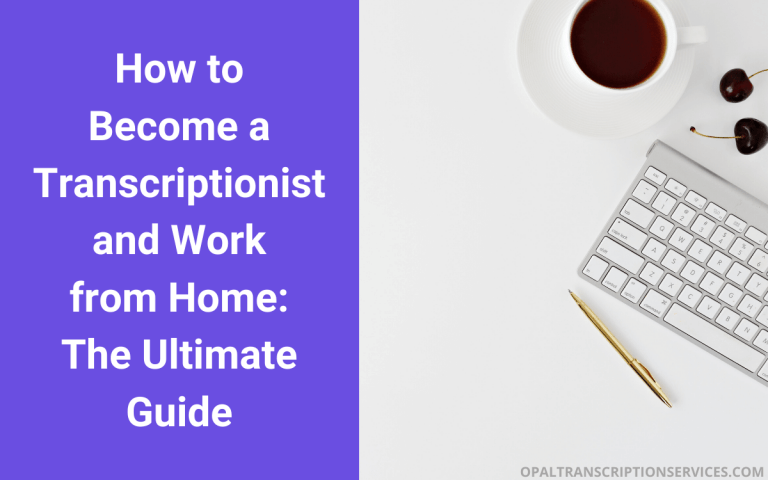5 Best Laptops for Virtual Assistants
As a virtual assistant working from home and on the go, your laptop is your primary tool and one of the most important investments you’ll make in your business. In this laptop buying guide for virtual assistants, we’ll look at recommended specs for VA work, as well as five of the best laptops for virtual assistants, covering a range of budgets and use cases.
While you’re here, also be sure to check out our list of the best free virtual assistant training programs and courses.
Virtual assistant computer requirements
Here are a few things to consider when choosing a laptop for virtual assistant work:
- Do you plan to work away from home often? Then you’ll need something sturdy, lightweight, small, and comfortable with long battery life and possibly an Ethernet port.
- Do you like to work outdoors sometimes? Consider choosing a laptop with a durable chassis and anti-reflective screen.
- Do you often work with multiple software programs and tabs open at once? Choose a laptop with a higher-end processor and sufficient RAM for multitasking. (If you find yourself multitasking a lot, be sure to check out our post of the best CRM software for virtual assistants.)
- Do you need a powerful laptop that doubles as entertainment? An entry-level gaming laptop might be what you’re after.
Laptop specs for virtual assistants: A quick breakdown
When shopping for the best laptops for virtual assistants, keep in mind the following tips and recommendations:
PC vs. Mac
Today, PCs are still more widely used for office-type work, while Mac is typically the choice for creative professionals. Ultimately, it comes down to preference.
As a virtual assistant, you’ll most likely need to use Microsoft Office 365, which comes pre-installed on many PCs (though you still need to pay an annual fee to use it). Mac users will need to purchase and install the software separately.
Weight
Laptops generally range from 2-8 pounds. For maximum portability, opt for a laptop weighing 4 pounds or less.
Screen size and resolution
Laptop screen size is measured diagonally from corner to corner (not including the casing) and generally ranges from 11 to 17.3 inches. Anything 14 inches and under is considered compact and is therefore more portable.
However, keep in mind that there’s often a tradeoff between screen size and performance. Laptops in the 13- to 14-inch range tend to use midrange processors that can handle basic VA tasks like document editing and Internet browsing, but which may not be suitable for multitasking.
If you need to do more processing-heavy work such as video editing, consider choosing a laptop with a 15.6-inch screen, which is a popular size for gaming laptops. These laptops typically weigh around 5 pounds and still maintain a degree of portability compared to a 17.3-inch screen. They are often equipped with powerful processors that are suitable for creative work or heavy multitasking.
Laptop screen resolution is defined as the number of horizontal and vertical pixels that make up the image on the screen. Therefore, a higher resolution equals greater image detail or sharpness.
With a higher screen size and resolution, you have more “space” to fit text on a screen and display applications or browser tabs side by side – a useful function for the multitasking virtual assistant.
With midrange laptops, the most common resolution is full HD (1920 x 1080 pixels, abbreviated as 1080p). Full HD and higher resolutions are ideal for more creative VA work like photo and video editing. Today, full HD is the standard in resolution.
CPU
The CPU (central processing unit or “chip”) is to your computer what a brain is to a human or an engine is to a car: It plays a central role in every task and operation you throw at your computer. This makes it one of the most vital specs when shopping for a quality laptop.
Today’s processors have multiple “cores” – in other words, multiple brains or engines that can run simultaneously. Generally speaking, more cores means better performance, up to a point. Meaning, if you’re not going to be using your laptop for processing-heavy tasks like video editing or gaming, then a CPU with many cores won’t necessarily improve the user experience.
For most basic virtual assistant tasks, such as word processing, doing Internet research, or posting to social media, a dual-core processor may suffice but is considered to be on the lower end of the quality spectrum. Many of today’s laptops have a CPU with anywhere from four to 10 cores.
For the multitasking VA who works with multiple applications at the same time, six cores is a good starting point. For the virtual assistant who does video editing or graphic design or uses their laptop for gaming, a CPU with eight cores will provide a much better experience.
Most PCs have an Intel (Core) or AMD (Ryzen) CPU. An Intel Core i3 will suffice for more lightweight tasks such as creating documents, sending emails, and managing social media. For the multitasking virtual assistant, the Intel Core i5 and AMD Ryzen 5 processors are a good fit. For highly resource-intensive work, a Core i7 processor will perform even better.
Memory (RAM) and storage space
Although memory and storage are measured in the same units, they have different purposes.
A computer’s RAM (random access memory) is its temporary, or short-term, data holding area. In other words, whatever tasks you’re currently working on or software programs you have open are contained in your computer’s memory. When you turn off your computer, the RAM is cleared.
For this reason, more RAM gives you greater ability to multitask, have many tabs or documents open, and run multiple large or complex applications.
If your VA work includes resource-intensive tasks such as editing photos, audio, or video, you’ll want to ensure your laptop has sufficient RAM.
A computer’s storage is its permanent, or long-term, data holding area (permanent in the sense that it stays written to the disk until it’s deleted or the disk is corrupted). This is where you save all your documents, media files, software programs, etc., for later use. Storage doesn’t affect your computer’s overall performance as much as RAM does.
When most people think of storage, they think of the hard disk drive (HDD). That said, solid-state drives (SSD) are quickly replacing HDDs as the most popular type of storage, as they are lighter, faster, and quieter. They also use less power and are more resistant to damage or failure than HDDs.
In some cases, you can upgrade your computer’s RAM. And, if you need more storage, you can replace your existing hard drive or connect an external drive. That said, many virtual assistants store or back up their data in the cloud, so tons of storage isn’t always necessary for many people.
For standard VA tasks like creating documents, sending emails, and browsing the web, 8GB of RAM is a good baseline starting point. Multitasking VAs or those using their laptop for gaming or other resource-intensive processes may require 16GB.
An SSD is recommended over an HHD, as these are the new standard in durability and performance. Look for at least 256GB of storage capacity for standard business use. If you also intend to use your laptop for gaming, then 1TB and up is ideal. For VAs who do photo and video editing, 2TB-4TB and up may be necessary.
Battery life
Look for a laptop with a battery life spec of at least 10 hours, and keep in mind that a laptop’s battery life is just an estimate. If you like to work away from home and you’re frequently unplugged, consider getting a laptop with a much longer battery life spec of 15+ hours.
Connections
The number and type of ports are an often-overlooked aspect of shopping for a laptop. By ensuring you have everything you need from the outset, you’ll avoid the need for a mess of adapters, cables, and USB hubs later on.
Some connections you may or may not need include USB, video connections (HDMI, VGA, DVI, DisplayPort), Ethernet, 3.55mm audio jack, and SD card reader.
Graphics card/GPU
For most virtual assistant businesses, an integrated graphics card will suffice. If you’re doing a lot of graphics-intensive work, you’ll likely need a dedicated graphics card, a.k.a. video card. This is a chip built for video processing that has its own RAM, greatly enhancing your laptop’s performance for graphics-heavy tasks.
Cost
Most laptops suitable for VA work cost $600-$1000. VAs who work heavily with images, video, and audio may need to spend up to $2500.
Ideally, you should get three to five years of use out of a business laptop.
What are the best laptops for virtual assistants?
For this list, we’ve chosen laptops at a variety of price points and VA use cases that meet most or all the recommended specs above. Our top picks are:
- Apple MacBook Air with M1 chip (most affordable Apple laptop for business)
- Acer Nitro 5 gaming laptop (best affordable gaming laptop)
- Acer Aspire 5 (best budget portable notebook for traveling virtual assistants)
- Lenovo Flex 5 14″ (best 2-in-1 convertible laptop)
- Lenovo IdeaPad Flex 5i Chromebook 13″ Intel 2-in-1 laptop (best Chromebook for virtual assistants)
Apple MacBook Air with M1 chip (most affordable Apple laptop for business)

Highlights
- Powerful and fast
- Ultraportable
- Very long battery life
Best for: Mac-loving VAs who do video editing and other resource-intensive or creative work
Though the bulk of this post focuses on Windows computers, we’ve included this laptop because it’s a great value for the performance you get. Apple has since released an even more powerful version of the Macbook Air, the M2, but most users will find the M1 more than powerful enough for their multitasking and video editing needs, with its ability to handle 4K and 8K video workflows.
PC users might even be tempted to switch over for the battery life alone, which is an incredible 18 hours. All in all, the MacBook Air is an affordable, portable, and extremely powerful business laptop for virtual assistants who find themselves unplugged for long periods of time.
Acer Nitro 5 17.3″ gaming laptop (best affordable gaming laptop)

Highlights
- Solid 1080p gaming performance with high refresh rate
- Affordably priced for a gaming laptop
- Backlit keyboard
Best for: VAs that do photo or video editing who need a laptop that doubles as entertainment
The Acer Nitro 5 consistently turns up in tech reviews as one of the best entry-level gaming laptops, with solid 1080p gaming performance at an affordable price point.
Coming in at 6.61 pounds and with an estimated battery life of 8 hours, the 17.3″ Nitro isn’t nearly as portable or long-lasting as some of our other picks, making it best for virtual assistants who are shopping for a laptop they intend to use around the house for entertainment as well as business.
With its 16GB RAM, 1TB storage, full-HD 1070p display with 144-Hz refresh rate, and dedicated graphics card, the 17.3″ Nitro is well-equipped for the multitasking virtual assistant, as well for creative professionals who do photo and video editing.
If you need something a bit more portable, note that the Nitro 5 also comes in a 15.6″ version, which is often rated the best gaming laptop under $1000.
Acer Aspire 5 14″ (best budget portable notebook for traveling virtual assistants)

Highlights
- Sturdy build
- Ultraportable
- Low cost
- Multiple USB ports
Best for: VAs on a budget who need a reliable, portable laptop equipped for standard office work
The Aspire 5 comes in 14″ up to 17.3″ varieties with varying CPU options. Here we’re reviewing the 14″ with the Intel Core i5-1235U processor, as its compact size, rugged build, and ample connectivity options make it a great travel laptop for virtual assistants.
While you won’t get high-end performance for resource-intensive work from a laptop in this price range, the Aspire 5’s specs provide respectable performance for standard virtual assistant tasks such as document creation, online research, and social media marketing. If you need more power, note that you can purchase a model with an i7 processor.
With up to 10 hours of battery life, the Aspire 5 is good for a day’s worth of work when you’re out and about.
Lenovo Flex 5 14″ (best 2-in-1 convertible laptop)

Highlights
- Excellent performance
- Great value for money
- Ultraportable
- Well-built chassis
- Multiple connectivity options
- Backlit keyboard
- 360-degree hinge plus touchscreen lets you use this convertible notebook like a tent, easel, tablet, or regular laptop
Best for: VAs and content creators looking for a portable laptop that doubles as a tablet
This 2-in-1 convertible laptop with touchscreen has a lot going for it: It offers far better computing power than many higher-priced machines, plus portability, flexibility, sturdiness, an incredible 16 hours of battery life, and ample connectivity options, making it a great choice for virtual assistants and content creators on the go.
The 360-degree rotating hinge plus touchscreen lets you use this notebook however you want. If you prefer to use a stylus, you’ll need to purchase the Lenovo Digital Pen, which has two customizable buttons and 4,096 pressure sensitivity levels.
All in all, the Flex 5 is a great choice for creative virtual assistants shopping for a workhorse laptop powerful enough for some light gaming on the side.
If you like the looks of the Flex 5 but it’s out of your price range, consider purchasing a Lenovo 2-in-1 Chromebook. The IdeaPad Flex 5i has great specs as far as Chromebooks go, with 8GB RAM and 128GB storage.
Final thoughts
When shopping for the best laptop for your virtual assistant business, start by making a list of two or three things that you absolutely must have – whether it’s ultraportability, powerful performance, or an anti-reflective screen. Next, identify your price range.
Finally, create a shortlist of laptops that match your required specs and that are within your selected price range. From there, you can choose the laptop that gives you the best value for your money. Good luck!




![How Much Does Transcription Pay? [Salary and Hourly]](https://www.mondayroadmap.com/wp-content/uploads/transcription-pay-salary-768x480.jpg)

